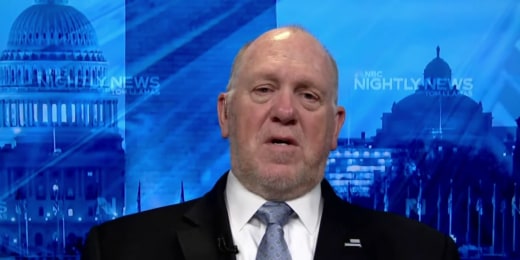
A surge of false or misleading posts, photographs and videos about the Los Angeles protests have been circulating on social media, with many of those shared among Latinos — mostly in Spanish — tying the protesters to socialist or communist governments.
One post on X with over 600,000 views claims that in the U.S., immigration protest groups have links to “the Venezuelan mafia,” the Communist Party of Cuba, and the Morena Party, the left-wing ruling party of Mexico. But the post doesn’t specify any groups and doesn’t give evidence of this.
The narrative echoes similar falsehoods that circulated during the 2020 George Floyd protests and the 2024 pro-Palestinian student protests on university campuses.
Parts of Los Angeles and other cities across the country have seen protests against immigration raids as President Donald Trump’s administration enforces a hard-line immigration policy. Dramatic scenes where cars, including Waymo taxis, were set on fire and protesters confronted law enforcement by throwing objects at them have filled social media feeds.
While some far-left groups have encouraged and even glorified violence in the protests, the onslaught of posts, mostly in Spanish, appears to be an attempt to link protests against immigrant raids to leftist Latin American governments, and the posts show support for President Donald Trump and his policies.
“Though there is always inaccurate information swirling around, there has certainly been a spike since the Los Angeles protests took off,” said Evelyn Pérez-Verdía, president of We Are Más, which focuses on social impact consulting. “In the past we would find false or inaccurate information more hidden in platforms like Telegram, WhatsApp. Now it’s more in the open and more easily found on social media and online publications.”
The falsehoods revive prior conspiracies that the protests are a planned provocation from leftist governments and not a spontaneous response to the immigration raids. On his platform, Truth Social, Trump has baselessly claimed protesters are “Paid Insurrectionists!”
Los Angeles Mayor Karen Bass and California Gov. Gavin Newsom have been targets of some of the misinformation that seeks to link them to communism.
A fake picture of Bass with Cuba’s late leader Fidel Castro, with his arm around her has circulated on social media. The original picture showed Castro with the late activist and former South African President Nelson Mandela.
Bass does have some connections to Cuba; she traveled to the country with the Venceremos Brigade in the 1970s to do volunteer construction work and later went there as a member of Congress. She received criticism in 2020 for calling Castro’s death “a great loss,” but the fake picture is a step further to link her directly with Fidel Castro.
“What we’re seeing in Spanish is different from what we’re seeing in English,” said Pérez-Verdía. In Spanish, she added, the false information is mainly focused on elected officials, like Newsom and Bass.
“They talk about the extreme left, communism — actors, whether domestic or foreign, are changing the messaging based on the community they are targeting,” said Pérez-Verdía.
In some cases, false information has made its way to the federal government.
Some conservative and pro-Russian social media accounts have circulated a video of Mexican President Claudia Sheinbaum from before the protests, claiming she encouraged them, according to Newsguard, a fact-checking website.
The move was “portrayed as foreign interference in domestic U.S. politics,” Newsguard reported.
During an oval office briefing Tuesday, Homeland Security Secretary Kristi Noem accused Sheinbaum of encouraging “violent protests.”
Sheinbaum responded on X, saying it’s “absolutely false” and included a video of herself from the day before saying she does not agree with violent actions as a form of protest. She also accused the opposition party of falsely saying she incited the protests.
In some cases, videos and photos that include a hammer and sickle, are taken out of context to make it seem the protests are a communist movement. One post with tens of thousands of views claims that the protests are “URBAN COMMUNIST TERRORISM.”
One Spanish-language post from an account with over 1 million followers glorifies violence against “progressive anti-ICE protestors.”
Situations like these create fertile ground for disinformation to spread. Fake accounts in Spanish are more prevalent than they are in English, according to Darren Linvill, a professor at Clemson University and co-director of its Media Forensic Hub. Social media platforms are more likely to identify and shut down accounts in English than in other languages.
Linvill said that another reason accounts in Spanish are more common than in English is that the use of marketing companies utilizing fake accounts — on behalf of political organizations or politicians — has spiked in the last few years.
The spread of false information “is absolutely having an effect on driving partisanship, conspiratorial thinking, distrust for expertise and the lack of a sort of shared reality,” said Linvill. “A shared reality is important for us to build compromise and govern nations together. And I think it is absolutely having an effect on that.”
“The degree to which motivated actors [bad actors], are responsible, versus the fundamental nature of social media to create a giant game of telephone that virtually generates the spread of false information, it’s hard to say,” Linvill said.













































